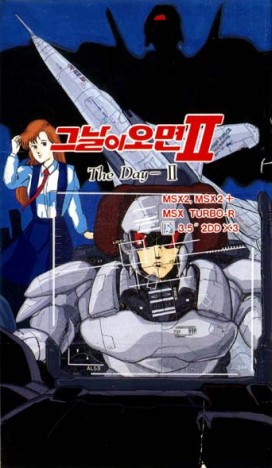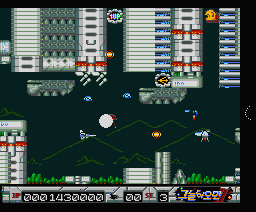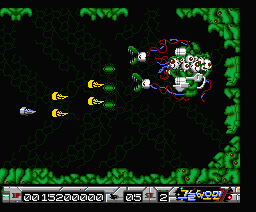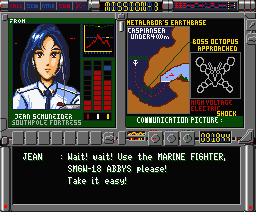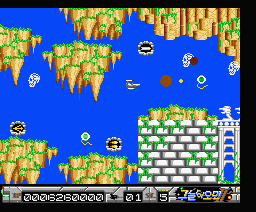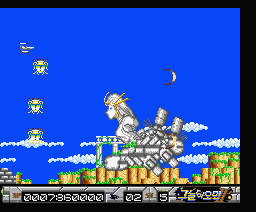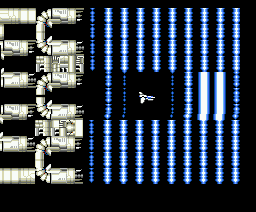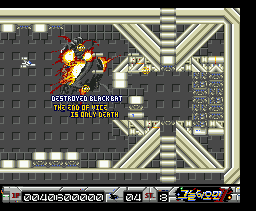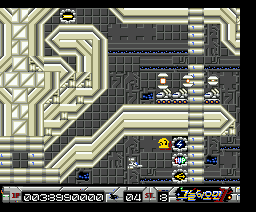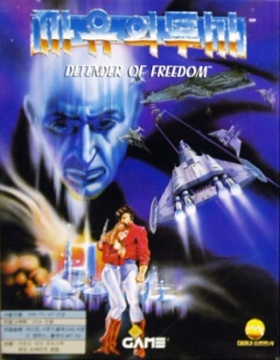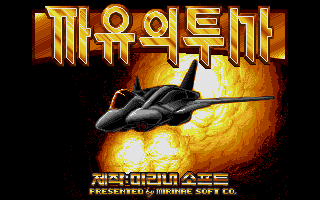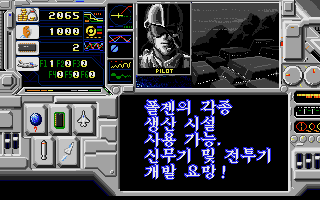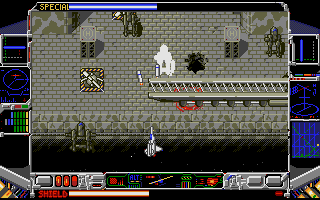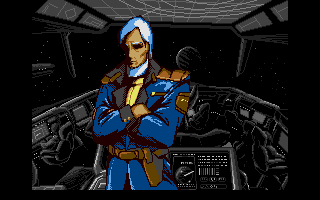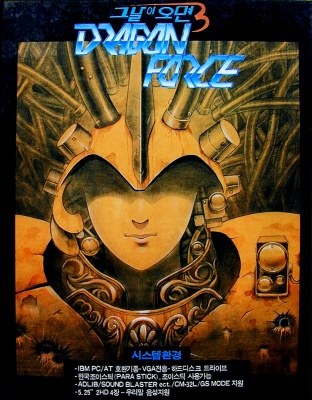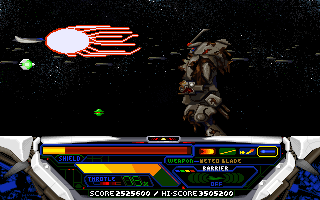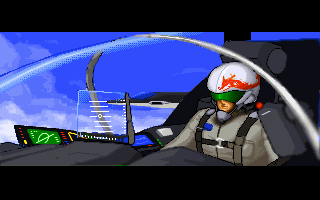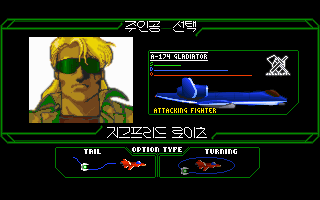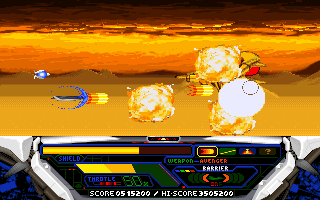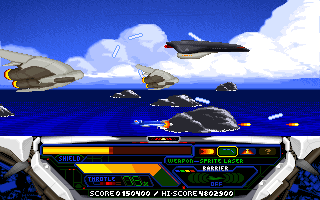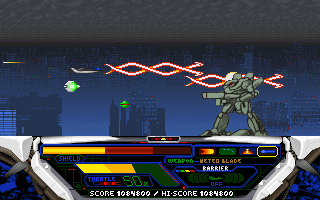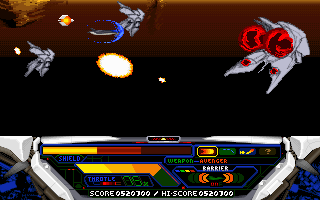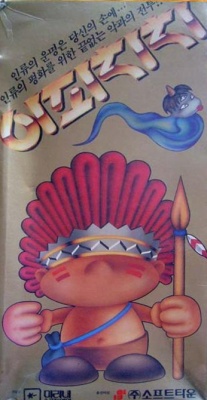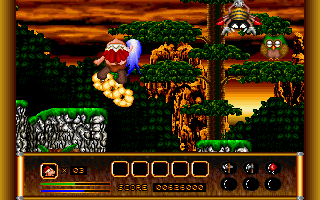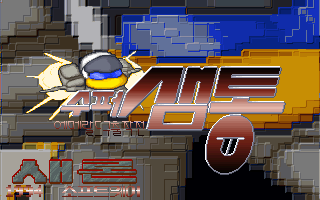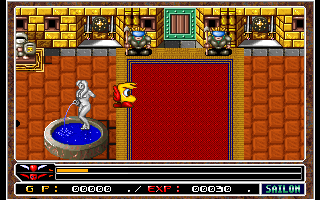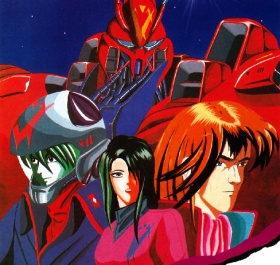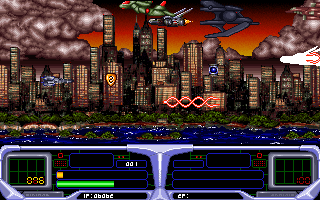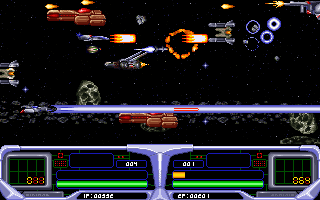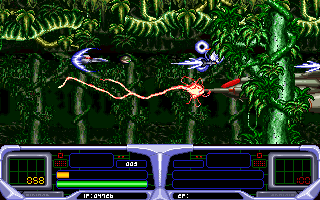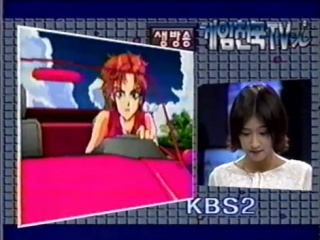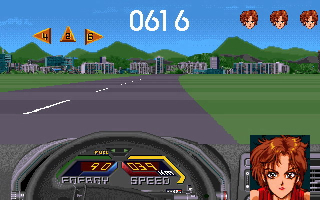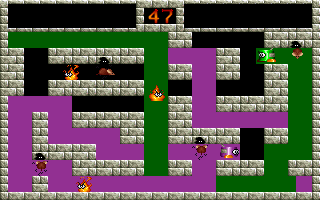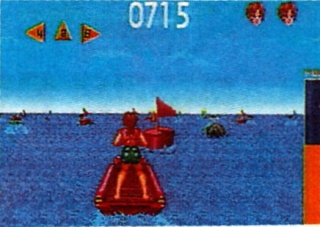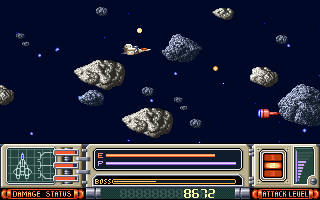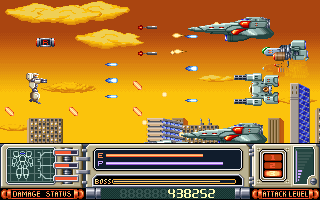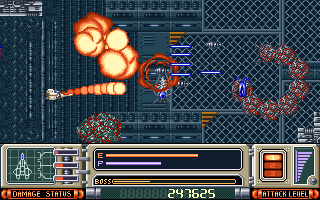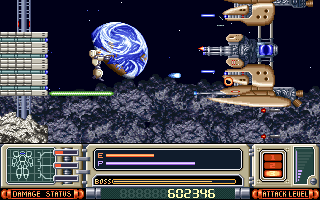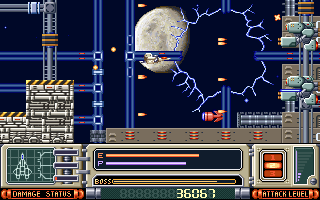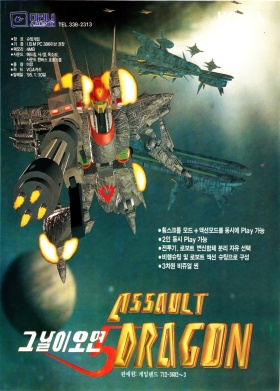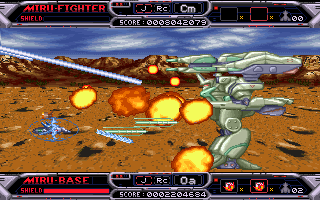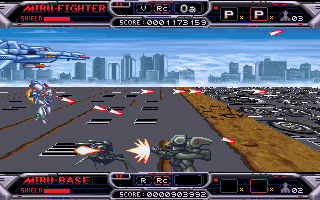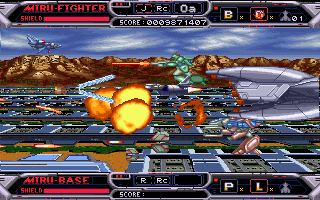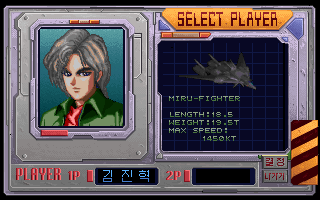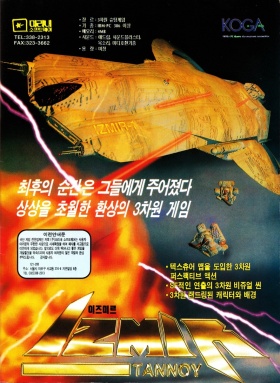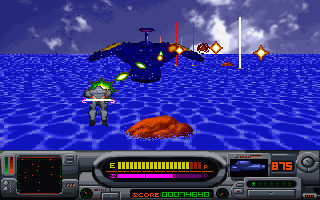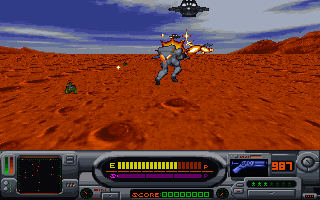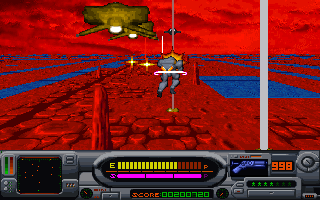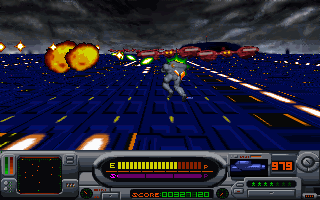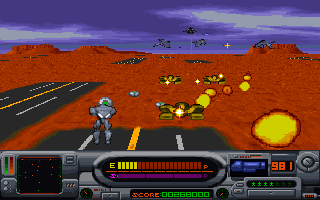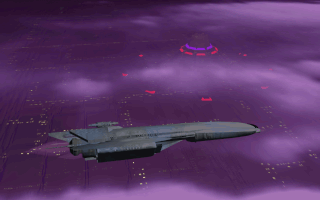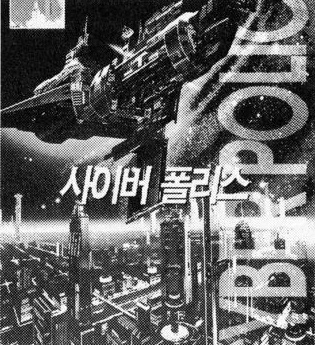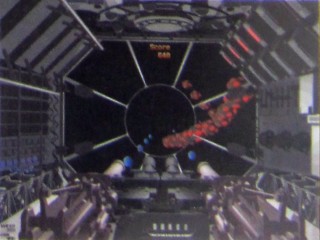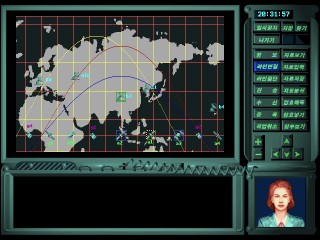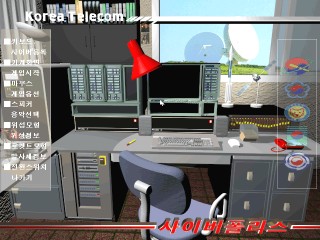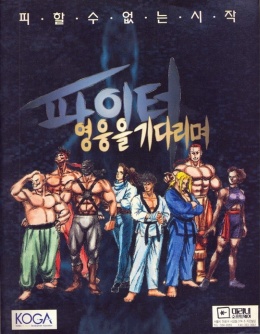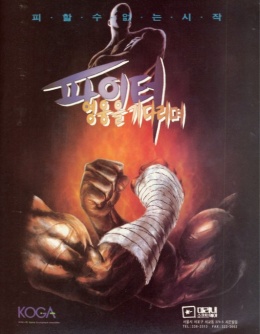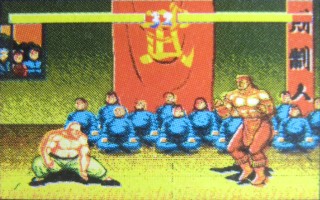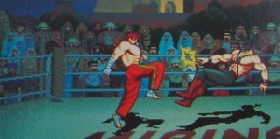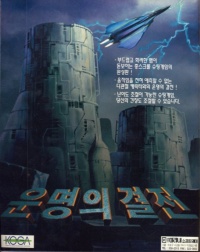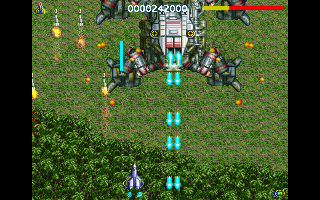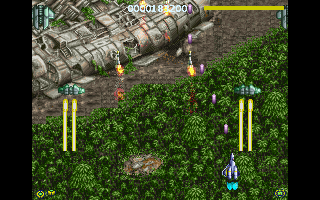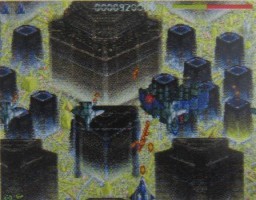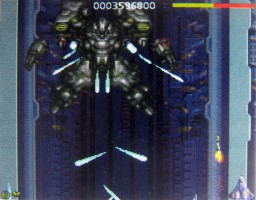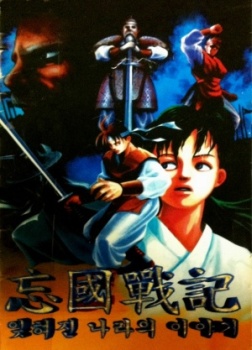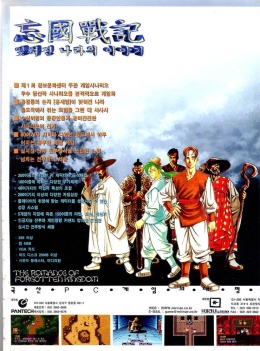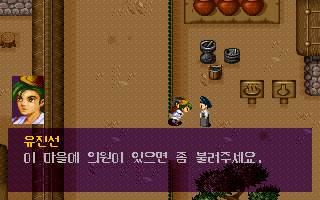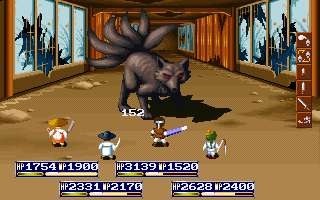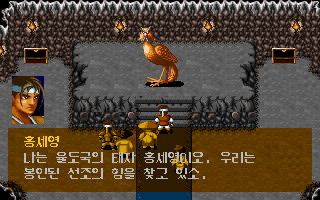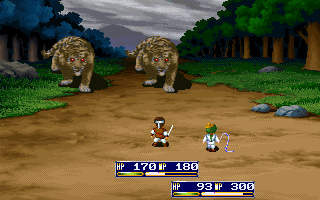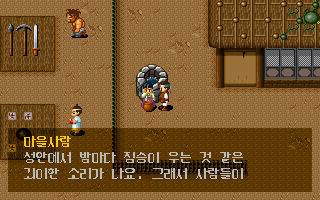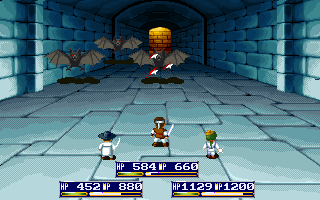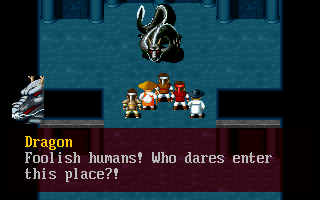A History of Korean Gaming
|
<<< Prior Page |
|
Mirinae: |
미리내 소프트웨어 Mirinae Software
|
Founded: |
February 1987 (team) |
|
Status: |
defunct (1999) |
|
Key People: |
조대호 Cho Daeho: |
|
Website: |
mirinae.co.kr (offline) |
미리내 엔터테인멘트 Mirinae Entertainment
|
Founded: |
May 29, 2001 |
|
Status: |
defunct (2009) |
|
Key People: |
Jeong Jaesung: |
|
Website: |
mirinae.co.kr (offline) |
미리내게임즈 Mirinae Games
|
Founded: |
June 27, 2011 |
|
Status: |
active |
|
Key People: |
Jeong Jaesung: |
|
Website: |
mirinae.com (offline) |
As the only team that really made a successful transition from early home computers to modern PCs, Mirinae was the most traditional developer in the 1990s and famous for their eager commitment to the domestic gaming industry. The company name stemmed from the old, purely Korean word for the milky way (as opposed to the Sino-Korean term eunhasu, which is used in modern times), and their advertisements would often plead on the gamers' nationalist spirit. In 1994, half of the staff left Mirinae to form Sailon Soft, but the two companies kept cooperating for many years, and Mirinae published the Sailon games Rose Knight and Mission: Spirit of Justice.
In 1996, Mirinae also released their development tools under the title Daejanggan ("The Forge") to the public and acquired the internet technologies company CH software1. They maintained a steady output of well received software until 1997, but during the East Asian financial crisis Mirinae came into financial troubles and silently slipped into oblivion.
In 2001, members of Mirinae Software formed the new company "Mirinae Entertainment". Jeong Jaesung returned as the company's president, and even Sailon Soft's Yang Jaeyoung returned2. After the release of only one game, Khan Online, in 2006 the company was bought by Secure Software, who specialized in security solutions3. Not the ideal partnership to begin with, things went drastically worse when Secure Soft' president Hyeon Yeonggwon was arrested for misappropriating over 13 billion Korean Won4. Support for Khan Online ended in October 2009, with Mirinae disappearing quietly once again at the same time.
After a few years in "hiding", Jeong Jaesung returned once again with a new company, this time as JJ Games5, but it was soon renamed to Mirinae Games. Since Jeong still holds all the IPs from the Mirinae Software days6, there's nothing in the way of some classic revivals, which started with a return of the The Day series.
Games
그날이 오면 II (Geu Nal-i Omyeon II) / The Day II - MSX2 (1991)
Cover
It may suprise that covering of the The Day series starts with part 2, but there's a reason for that. Mirinae had planned and advertised the first episode in 1989, but it was never released. However, although they dropped the entire first game, the number for the sequel stayed, to much confusion for later retro gamers.
The game itself is a sidescrolling shoot 'em up, and a pretty good one at that. It doesn't need to fear comparison with highlits by the big names on the MSX2, like Compile or Konami. Extensive story cutscenes, big enemies and fluently scrolling stages - the game delivers everything an MSX2 shmup fan could ask for. There's only a few technical weaknesses, so the status bar is only visible when the game is paused, and there's some noticeable slowdown during the second level. The music also isn't as engaging as Mirinae's later games and doesn't quite fit the game. It's more in line with what one would expect from a cutesy platforming game.
The player takes on 9 missions as Captain Lee, in hunt for the android terrorist organization Metalabor, who stole the new element Mega Plutonium K to threaten world peace. And they would have gotten away with it if they weren't so foolish as to kidnap Captain Lee's sister, to blackmail their father - a famous scientist - not to reveal the weakness of the fabulous energy source. At least that is the gist of the story, which is presented in an English so bad it's hard sometimes to figure out what's going on.
The controls are top-notch, though, as is the level design. Every mission is introduced by a briefing sequence, introducing the boss of the stage and a hint to its weakness. The stages are rather long, but not as mindnumbingly as in later episodes in the series. A few of the weapon systems are less useful than others, but other than that, the game is well balanced, and powerups are in plentiful supply. Captain Lee gets a new ship for every stage, but the differences are almost exclusively cosmetical, only the vertical range of the smart bombs gets smaller with subsequent "upgrades".
The Day II is as hard as a good shmup should be, but there's at least three difficulty levels to chose from. These are mostly represented through differing scrolling speed and weaker bosses, but for some reason the program doesn't offer a menu to select them, but the difficulty is rather determined by which of the three disks the game is booted from. In consequence, the hard and easy levels also skip the intro cutscene.
The game also first introduces Samtong, Mirinae's early, yellow mascot. It would haunt many following games with copyright warnings and cameos, and even got it's own game to star in later - that was developed by Sailon Soft after the split, though.
자유의 투사 (Jayu-ui Tusa) / Defender of Freedom - IBM PC (July 1, 1992)
Cover
Mirinae entered the IBM PC games market with this vertically scrolling Shoot 'em up. After the success of Geu Nal-i Omyeon II, the game was hyped a lot before release, first under the working title Unmyeong-ui Gyeoljeon (which should be picked up again for another game later). However Mirinae hadn't mastered the new platform yet, and the game had some technical issues, like occasional flickering and absolutely no control over the running speed, which makes the game impossible to run at a stable frame rate on any machine. It will either be to fast in normal situations, or choppy in more busy areas.
The actual game stages are connected with a simplistic simulation element, where money earned in the stages can be invested in new technologies and space ships. The huge selection of weapon system forces the player to make tough choices especially early on in the game. Does one approach the next planet with a spare ship more, or equipped with a superior weapon? The fact that purchased upgrades are only available after the following stage make the choices even more strategic.
Stages are rather short, but they repeat themselves indefinitely until the entrance to the next section is found. Thus, they can be grinded for more money, but only the toughest veterans will survive long enough for that. The game is extremely hard, not only is the screen full of enemies most of the time, big portions of the screen serve as dangerous obstacles most of the time, and not always is it easily recognizable where the save path lies.
In the end, Defender of Freedom wasn't the expected hit from Mirinae, but solid enough to secure a mild success.
그날이 오면 3 (Geu Nal-i Omyeon 3): Dragon Force / The Day 3 - IBM PC (March 1993)
Cover
Their second IBM PC game finally put Mirinae in its place as one of the most popular Korean developers. The player gets to chose between three pilots/ships with individual strength and weaknesses. This time the weapon system is inspired by the Thunder Force series, with its four weapon slots, each of which can be upgraded. The weapons aren't balanced as well, though, and some are only useful against certain enemies. The fourth weapon (and to lesser degree the 2nd upgrade of the third) can only be found late in the game, but then it renders all the others useless. The "Option" upgrade has also been brought back from the cancelled first game. There's three different types of them, which can be set at the start of the game to either circle or follow the player's ship.
The graphics deliver a real spritefest with excessive multiple plane scrolling, enemies zooming in from the back- or foreground, mode7-esque effects and plenty of explosions, lasers and bullets, which only sometimes make it difficult to make out all enemy fire. The BGM isn't short of a masterpiece as well, and fans of traditional shmup-music will feel reminiscent of the masterpieces of the genre.
For the most part, the stages are designed well to convey intense action, but they contain some dull stretches, and are overall a tad too long. The bosses also take their fair share of hits before they bow down. Completing the game takes about an hour, depending on the speed of the hardware, as once again there's no limitation on the framerate.
When it was released Dragon Force was a huge success, and no other domestically developed game in the early nineties held its place in the charts longer. According to president Jeong Jaesung, The Day 3 sold 25,000 copies7.
아파차차 (Apachacha) - IBM PC (November 26, 1993)
Cover
With Apachacha, Mirinae tried to branch out a bit from the shooter genre - and failed on almost every level. It doesn't seem so bad upon first look, the graphics are cute enough and reminiscent of that certain Amiga-charme, and the music is Mirinae-typically awesome. As soon as one starts to push buttons and the native American protagonist is set into motion, though, everything goes awry. The controls lag terribly and feel incredibly wrong. The six platforming stages are easy enough, but it is next to impossible to effectively avoid enemy attacks. Apachacha can switch through up to six different weapons and is also able to execute a Dragon Punch special attack, but none of those gets him very far. Items spawned by beaten enemies dissapear within a fraction of a second, so they can only be picked up when standing right in front of them to begin with.
If all that wasn't bad enough, the game is also very glitchy. When continuing after a lost boss fight, the boss music just keeps on playing through the whole stage, and as good as these compositions are, they're meant to create heavy tension and thus get on the nerves rather fast. Sometimes the game forgets to spawn the boss altogether, then only walking back and forth time and again can make them appear. In other instances, the program might also decide to spawn the boss twice. Possibly the worst game Mirinae has ever created.
수퍼 샘통 (Super Samtong) - IBM PC (March 1994)
Super Samtong (IBM PC)
Developed at Mirinae Software before the split with Sailon Soft, but released afterwards under the Sailon label, this game is introduced at the Sailon Soft profile.
그날이 오면 4 (Geu Nal-i Omyeon 4): Icarus / The Day 4 - IBM PC (June 1994)
Artwork
Only one year after The Day 3, the next sequel was released, but it couldn't repeat the success of its predecessor. It could have made so many improvements, but one big fault spoils the whole experience. The weapon balancing is terrible. The best and only viable tactic for the whole game is constantly charging up the standard weapon and wiping out the screen with the charged attack, while hoping not to accidently pick up any of the other weapon types, because they're almost completely useless. Only later in the game appear arms that can get one barely through, but they're nonetheless vastly inferior to that one attack.
As the first game in the series, Icarus supports simultaneous two player gameplay. Bot players can fusion into a single mecha, but it's practically impossible to figure out in mid-gameplay. That doesn't matter, though, as they can obliterate practically everything by cleverly timing their charged shots.
For some reason the production values also suffered a bit. The intro cutscene has to make do without voiced dialogue, and it is now shown in ugly render graphics instead of pixel art. The most enjoyable part is once again the music, which fortunately can be listened to in a seperate sound test mode.
KBS 2TV Saengbanbsong Game Cheon'guk broadcast games - TV, IBM PC (June 1994-1995)
Saengbangsong Game Cheon'guk
Mirinae also contributed a number of games to an interactive live game program on KBS 2TV, called Saengbangsong Game Cheonguk (Live Broadcast Game Paradise). The first game to be broadcasted was Super Girl Seri, a series of racing challenges were callers would get to steer the titular heroine through parcours on a plane, a jetski or a car. It was first shown on August 14, 1994. Even a few days before that, it was available for download online8.
Later followed competitive games for two players. In Tokki-wa Geobuk (Hare & Turtle), two players have to throw balls over a table to each other's side, until one of them gets rid of all the balls or the time runs out. Hitting the opponents caused them to dizzy. Ttog'i-wa Sun'i was a simple clone of Columns, and Paint Man had the players take the role of paint cans, who had to paint the floor of a Pacman-style labyrinth in their own color while avoiding flames and mice. In all three it was possible to KO the other player to win the game, but most matches would end through the short time limit and decided by score.
슈퍼 빔저 (Super Beemger) - IBM PC (September 1994)
Yet another sidescrolling shooter, but this time with a twist. By holding down the Ctrl key, one has access to a number of "special moves", executed not unlike a fighting game. The most important one is the transformation move that allows to change the ship into a mecha, but there's also energy recharge, an offensive shield and of course the obligatory screen filling super attack, among others. All moves draw from a blue special bar, which slowly regenerates over time. The player can select between three fire rates, the lower the setting the faster the regeneration of that bar.
The two transformation states play out vastly differently. While the mecha uses a pretty standard shmup arsenal, the space ship relies entirely on homing weapons that make it hard to hit the enemies as intended, but are indispensable when the screen is full of enemies and the player cannot help but dodging all the time. The game does a good job at enforcing the use of both forms with enemy types that are immune to one of the two forms' attacks and other such chicanery.
Much as the game deserves praise for its interesting concept, for most players it won't matter much due to a merciless difficulty. The legions of enemies punish every single mistake in form and firepower switching and put the poor ship through the wringer quite a lot. Holding the CTRL button for special moves makes the ship immovable, leaving it exposed to enemy attacks. And all that comes before the utter unfairness that is the final boss.
After the Mirinae logo, the intro also shows the team name Tortoise, which could mean that the game was developed in cooperation with an outside team.
그날이 오면 5 (Geu Nal-i Omyeon 5): Assault Dragon / The Day 5 - IBM PC (January 1995)
Advertisement
The last part of the series returned back to form after the weak fourth episode. The weapons system goes back to the simplicity of Geu Nal-i Omyeon II, and the floor is once again displayed in mode 7-esque manner. From its direct predecessor hails back the possibility to transform both players into a mecha, which actually works this time around (player 1 controls the mecha, player 2 its weapon). So one could say that Assault Dragon takes the best of all games in the series. And then it drops a huge pile of "hard" on top. This final entry is probably the most difficult of them all, and the credits are as limited as ever.
However, maybe because 2D shoot 'em ups were already a dying genre in 1995, it couldn't cause the same impact Dragon Force had two years before.
이즈미르 (Izmir) - IBM PC (May 1995)
Advertisement
Mirinae's first attempt at a (sprite based) 3D game. Izmir plays almost identical to Sega's Space Harrier and other similar games. New is the whole arsenal of weapons that can be switched through at any time, but with the exception of air-to-ground bombs all of their difference boil down to damage level and rate-of-fire. Ammunition is picked up from the ground, where is also the most dangerous area of the playing field due to various traps like walls of fire and turrets.
At the end of every stage awaits a boss who hardly ever needs any particular strategy other than just dodging and shooting. Nonetheless the game is as hard as any Mirinae shmup, and extra lives are once again strictly limited.
사이버 폴리스 (Cyber Police) - IBM PC (July 1995)
Advertisement
Advertisement game for the Korea Telecom. A simulation about tracing spies and hackers via satellite communication. On the map, a message has to be sent from one place to another by linking the satellites and antennae, after that the player is lead to one of three arcade mini games.
As many other Mirinae games, the game has an iffy timing code, and it is quite impossible to play on any modern machine even after artificially slowing down the system.
Cyber Police (IBM PC)
파이터: 영웅을 기다리며 (Fighter: Yeongung-eul Gidarimyeo) / The Hero - IBM PC (December 11, 1995)
The Hero was initially planned for a release in 1994 and would have become one of the very first Korean network based games, but it was delayed for a very long time and didn't hit the market until more than a year later, after it lost all its novelty status. After Apachacha and this it almost appeared as if Mirinae wasn't capable of doing anything other than shooters. The controls are very unresponsive and the animations incredibly choppy. It's obvious the team tried to keep things as simple and loose as possible to adapt to the still unperfected network technology, but it seems they sacrificed far too much in the process.
운명의 결전 (Unmyeong-ui Gyeoljeon) / Blur Way - IBM PC (December 11, 1995)
After a few less than impressive experiments in different genres, Mirinae's second vertical scrolling shooter once again delivered the quality gamers had gotten used to by their shmup's. The game features a system around three upgrade- and switchable weapon systems.
The animations and especially the scrolling are incredibly smooth this time around, and Unmyeong-ui Gyeoljeon might just be one of the technically most well-rounded 2D shooters for DOS. After the game's release, Mirinae immediately began development of a direct sequel, but the second game didn't make it to retail.
망국전기: 잊혀진 나라의 이야기 (Mangguk Jeon'gi: Ichyeojin Nara-ui Iyagi) / The Romance of Forgotten Kingdom - IBM PC (December 20, 1995)
By 1995, Korea was finally able to deliver a number of decent RPGs, and Mirinae jumped onto the bandwagon as well. The Romance of Forgotten Kingdom was their first non-shooter that actually worked out well. The story about an amnesiac prince and an evil force trying to take over the throne is stereotypical enough, but the game could convince with its unique scetting based on Korean mythology and history. It builds upon the Hong Gildong story, but rather than retelling it, it takes it as a premise for its world, and deals with the fate of Hong Gildong's descendants in the realm of Yulgok.
The battle system can be described as a variation on the TBA system known from Final Fantasy, but instead of having to wait for the characters' turn, the state of the action time bar here determines the strengths of attacks (although some spells take recovery time after their execution), which can get a little hectic. It also features a simplistic job system. The game is balanced for grindless playthroughs (with some odd flaws like enemies that can't even hurt the party), but a bit too linear. It was fairly successful in its time, but unlike the Astonishia Story and War of Genesis series, it didn't become a true hit.
This can probably be explained by the number of bugs and glitches that plague the game. It is even possible to skip a main quest and a story-relevant party character (whose lines still appear in the following cutscenes) altogether because of this. The game is also quite short for an RPG and fairly linear, although it offers two branching paths at the later course of the game, as well as two different endings, accordingly.
In cooperation with their publishing partner Pantech, Mirinae also offered a network client for the game, which allowed players to chat and exchange items from their save states. Additional online features were promised as well fo later updates, but there is no documentation as to whether they actually happened.
Mangguk Jeon'gi was never released outside of Korea, but there is an English fan translation of the game.
References
1. PC Champ 5/1996 page 82
2. Game Meca 4/17/2002
3. iNews 1/20/2006
4. Mini Today News 12/26/2006
5. The Games 4/17/2013
6. The Games 1/4/2014
7. Game World 2/1995, page 80
8. Game World 9/1994, page 71
|
<<< Prior Page |
|
Mirinae: |



